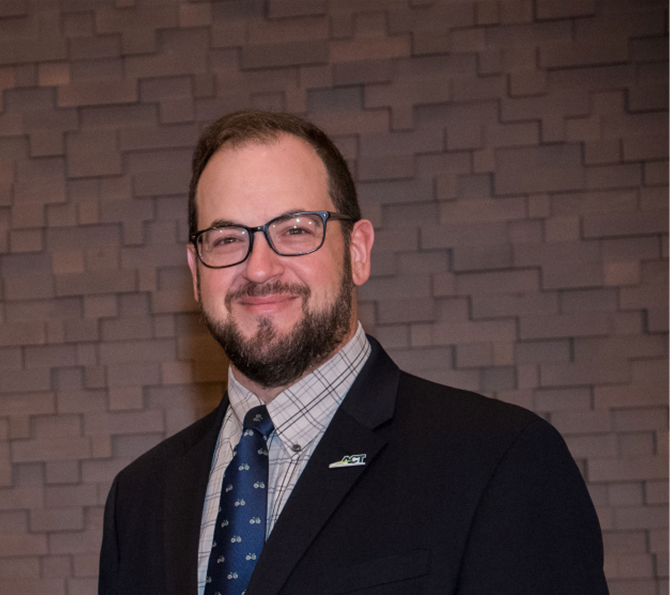The TDM toolbox: how does Transportation Demand Management work today?
Steer speaks to David Straus, executive director at the Association for Commuter Transportation to discuss TDM's relevance today.

 September 18-22 is Transportation Demand Management (TDM) Week, a time when professionals around the world will come together and celebrate the benefits and opportunities of TDM.
September 18-22 is Transportation Demand Management (TDM) Week, a time when professionals around the world will come together and celebrate the benefits and opportunities of TDM.
Coordinated by the Association for Commuter Transportation (ACT), TDM week will see groups in the US toasting s’mores on southern Californian beaches and taking bicycle tours of Florida as they discuss the renewed importance of building a multimodal transportation system which doesn’t rely on single occupancy vehicle use.
But what is the relevance of TDM to our contemporary social and policy landscape? And what opportunities does it afford to politicians and the public alike?
“The challenges we face with congestion, climate change and overall equity within our communities, these are huge problems,” says David Straus, executive director at ACT.
“Transportation emissions are the greenhouse gas emissions growing at the highest percentage. We've done great work on the energy efficiency side, but transportation is a big challenge because it requires so many individual decisions to be made.
“TDM can help with that.”
The TDM toolbox
For TDM to work, it requires a coordination from the top down, bottom-up and middle outwards. ACT, in their capacity as a TDM advocacy group, influences federal legislation and funding and then engages with regional and city officials over their implementation.
“We are actively involved in educating Congress and educating the Department of Transportation about the benefits of TDM programs and policies supportive of those programs, and work to actively advocate for the inclusion of TDM within various federal legislation and programs,” says David.
ACT works to influence the Transportation Reauthorization Bill, which recurs every four–six years. The bill sees billions of dollars dedicated from the federal government to support transport initiatives.
Through their outreach work, ACT has also aided the development of the carbon reduction program, part of the Infrastructure Bill, which aims to support transportation emission reduction at the state and regional level, including the implementation of policies like bike and scooter share program development.
“We're always looking at ways to integrate TDM within a wide range of various federal programs and initiatives that are out there,” David adds.
Elsewhere, in the private sector, employers hold huge sway in encouraging multimodal travel and a shift away from private vehicles if they choose to use it. Using tools like qualified transportation fringe benefit programs, employers can offer commuter benefits like subsidies or pre-tax commuter transit passes, which can encourage the use of public transit.
In San Diego, where Steer operates the San Diego Association of Governments’ Sustainable Transportation Services program, over one hundred companies were recently recognized for their contribution to TDM at the annual Diamond Awards ceremony.
“In many ways, the employer has the greatest influence on an individual's decision-making,” says David.
“If an employer embraces the ability to provide transportation options to their workforce, you see a greater adoption of public transit, vanpooling, carpooling, cycling and walking through the decisions that they make.
“If they provide none of that and simply tell people ‘Here’s a parking lot get to work,’ you tend to tend to see folks driving in.”
TDM: making a change
The rewards of TDM can be huge.
In the District of Colombia, Florida, Oregon and Texas, private vehicle use to and from 801 schools was reduced by 16% over five years thanks to programs that encouraged walking and cycling from Safe Routes to Schools.
Elsewhere, towns in regions in Missouri, California, Minnesota and Wisconsin saw upticks of 23% in walking and 48% in cycling between 2005 and 2013. This was thanks to the Nonmotorized Transportation Pilot Program, which saw $100 per capita from the US Federal Highway Administration invested in pedestrian and cycling infrastructure and improvements.
The city of Seattle, where Steer is currently working with local government to develop a future TDM Strategic Plan, is often held up as the poster child for TDM success. Despite large population growth of 150,000 residents (with an attending boost in housing and jobs) in the decade between 2010 and 2020, the city saw a 5% dip in vehicle trips. Meanwhile, in the downtown area, the share of trips taken by private automobiles was reduced by between 26 – 35% thanks to TDM initiatives.
With an eye to the future, TDM strategists are now viewing parking, both residential and commercial, as the next frontier to reduce vehicle trips. Plans to this effect have already been enacted in places as far apart as Chicago, Boston and Austin.
“The requirements for parking minimums in new developments, and perhaps the elimination of those parking minimums, allowing developers to make a decision of how much parking they feel is necessary. That's going to be a really important policy decision for communities across the country,” says David.
“That will really help to discourage the use of private vehicles moving forward as well as reduce costs for housing and make more efficient use of land space that we have within our regions.”
This TDM week, ACT will be hosting a fly-in in Washington, DC, to once again push their federal policy goals to lawmakers. However, conversations on the ground can be just as important as a way to build consensus and a brighter future through multimodal transportation.
“It is inefficient to utilize single occupancy vehicles. We cannot build our way out of congestion issues that are choking our cities, that are choking our suburbs, that are literally choking people,” says David.
“It requires so many groups to come together to say, what type of community, region, world or state do we want to be living in?
“By building a multimodal transportation system that supports all modes equally, we're making our communities more liveable. We're making access to jobs easier and providing everybody with equal opportunities to be able to participate in society and the world around us.”



